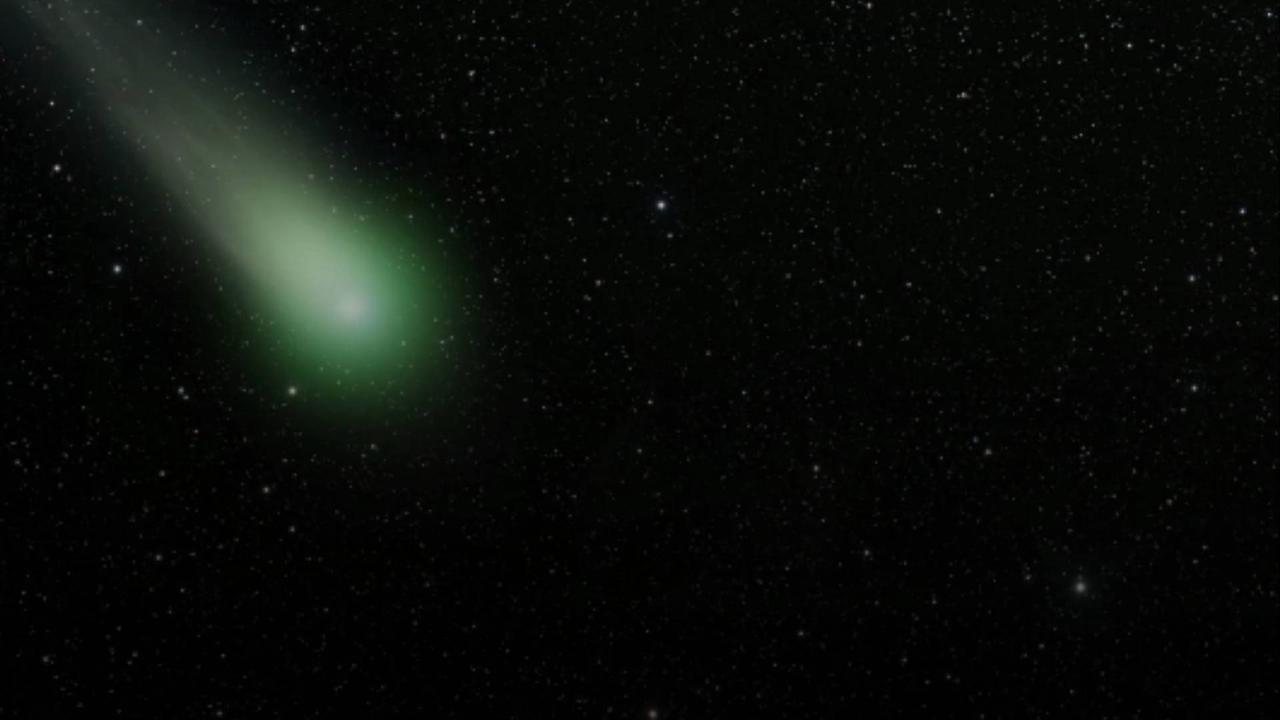Earthbound Comet Blasted by Massive Solar Ejection

Earthbound Comet Blasted by Massive Solar Ejection
Earthbound Comet , Blasted by Massive , Solar Ejection.
Earthbound Comet , Blasted by Massive , Solar Ejection.
'Newsweek' reports that a newly-identified comet in our solar system was recently blasted by a powerful solar wind that blew its tail apart.
Comet C/2023 P1, otherwise referred to as Nishimura, was first spotted on August 11 by an amateur astronomer in Japan, Hideo Nishimura.
.
By mid-September, the comet is expected to be visible in the night sky with the naked eye.
.
On September 2, the comet was hit by a massive coronal mass ejection (CME), which ripped away its tail.
.
A comet is like a dirty snowball, Keith Horne, professor of astronomy at the University of St.
Andrews in Scotland, via 'Newsweek'.
Comets and planets both orbit the sun, but unlike the circular orbits of planets, comets follow highly elliptical orbits, Keith Horne, professor of astronomy at the University of St.
Andrews in Scotland, via 'Newsweek'.
'Newsweek' reports that as a comet moves closer to the sun, it releases a trail of dust and ice as it gets hotter.
This leaves it with lots of loose particles, both charged and neutral, that come away from it while it is moving, Ian Whittaker, senior physics lecturer in physics at Nottingham Trent University in the U.K., via 'Newsweek'.
The neutral particles come off in a cone behind the comet as it moves—a bit like being behind a big truck on the motorway while it's raining, all the excess water hits whatever is directly behind it, Ian Whittaker, senior physics lecturer in physics at Nottingham Trent University in the U.K., via 'Newsweek'.
On September 12, Nishimura will reach its closest point to Earth, a distance of about 27 million miles.
.
The comet, which currently has a magnitude of six, will reach its closest distance to the sun on September 17, bringing it to a brighter magnitude of two or three.


![Protesters disrupt final election debate [Video]](https://video.newsserve.net/300/v/20240627/1379739756-Protesters-disrupt-final-election-debate.jpg)

![Northern Lights Visible Across North America After Massive Solar Eruption [Video]](https://video.newsserve.net/300/v/20230920/1358211125-Northern-Lights-Visible-Across-North-America-After-Massive.jpg)
![Firey Rain on the Sun [Video]](https://video.newsserve.net/300/v/20230913/1694584836-Firey-Rain-on-the-Sun.jpg)
![Space Weather and Earth's Aurora [Video]](https://video.newsserve.net/300/v/20230906/1693987955-Space-Weather-and-Earth-apos-Aurora.jpg)